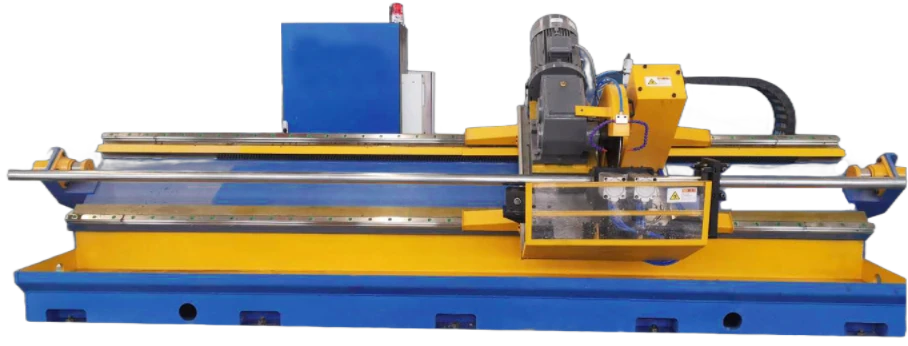Techniques for Achieving Precision in Machine Straightening Processes
The Importance of Machine Straightening in Modern Manufacturing
Machine straightening is a critical process in modern manufacturing, especially in industries where precision and accuracy are paramount. As production techniques and technologies continue to evolve, the need for effective and efficient machine straightening has never been more important. This article explores the significance of machine straightening, its techniques, applications, and benefits in contemporary manufacturing processes.
What is Machine Straightening?
Machine straightening refers to the process of correcting the deformation of mechanical components, ensuring they meet stringent specifications for dimensions and tolerances. This deformation can result from various factors, including improper handling, manufacturing errors, and stress accumulation during operations. The goal of machine straightening is to restore the original geometry of the components, thereby enhancing their performance and longevity.
Techniques of Machine Straightening
There are several techniques employed in machine straightening, each suitable for different types of materials and applications. The most common methods include
1. Heat Treatment This involves heating the deformed component to a specific temperature and then allowing it to cool. The heat helps relieve internal stresses, making it easier to reshape the material. This technique is often used for metals that exhibit ductility.
2. Mechanical Straightening This method utilizes mechanical forces to bend or pull the material back to its original shape. Equipment like hydraulic presses or mechanical jigs are often used in this process, making it suitable for high-volume production.
3. Cold Straightening This technique involves applying force to the material at room temperature. While it requires careful application to avoid further damage, it can be very effective for minor deformations.
4. Laser Straightening A newer method, laser straightening uses precision laser technology to assess and correct distortions. This technique is highly accurate and is particularly beneficial for complex geometries or components that experience tight tolerances.
machine straightening

Applications of Machine Straightening
Machine straightening finds its applications across various industries, including automotive, aerospace, and construction. In the automotive sector, for instance, components such as chassis and body panels often undergo straightening processes to ensure proper fit and function. In aerospace, where safety and performance are critical, parts like wing structures and landing gear must meet stringent specifications, making machine straightening essential.
Additionally, construction equipment like beams and columns is often subjected to straightening processes to ensure structural integrity. Misalignment in these components can lead to catastrophic failures, making it paramount to address any deformations during the manufacturing process.
Benefits of Machine Straightening
The advantages of machine straightening are manifold. Firstly, it significantly enhances the quality of products by ensuring that all components fit together seamlessly. This is particularly crucial in complex assemblies where even minor misalignments can lead to operational inefficiencies.
Secondly, machine straightening can extend the lifespan of components. By restoring parts to their original specifications, manufacturers can reduce wear and tear, ultimately saving time and money in maintenance and replacements. This not only improves safety but also contributes to overall productivity.
Lastly, machine straightening can result in cost savings for manufacturers. By correcting defects instead of discarding imperfect components, companies can reduce waste and lower production costs. This sustainability aspect is increasingly important in an era where environmental considerations are driving production methods.
Conclusion
In conclusion, machine straightening is an indispensable process in the realm of modern manufacturing. As industries move towards greater precision and efficiency, the role of machine straightening will continue to grow. By employing various techniques, manufacturers can ensure their components meet the highest standards of quality and safety, thereby improving product performance and longevity. In a competitive market, investing in effective machine straightening processes not only enhances productivity but also reinforces a commitment to excellence and sustainability.
-
High Frequency Straight Seam Welded Pipe Production Line-BzZhou Xinghua Machinery Equipment Manufacturing Co., LTD.|Precision Welding, High EfficiencyNewsJul.30,2025
-
High Frequency Straight Seam Welded Pipe Production Line|BzZhou Xinghua|Precision Welding&EfficiencyNewsJul.30,2025
-
High Frequency Straight Seam Welded Pipe Production Line - BzZhou Xinghua|Precision Engineering&EfficiencyNewsJul.30,2025
-
High-Frequency Straight Seam Welded Pipe Production Line-BzZhou Xinghua Machinery Equipment Manufacturing Co., LTD.NewsJul.30,2025
-
High-Frequency Straight Seam Welded Pipe Production Line-BzZhou Xinghua Machinery Equipment Manufacturing Co., LTD.|Precision Manufacturing, High EfficiencyNewsJul.30,2025
-
High Frequency Straight Seam Welded Pipe Production Line-BzZhou Xinghua Machinery Equipment Manufacturing Co., LTD.|Precision Steel Pipe Manufacturing&Industrial EfficiencyNewsJul.29,2025


